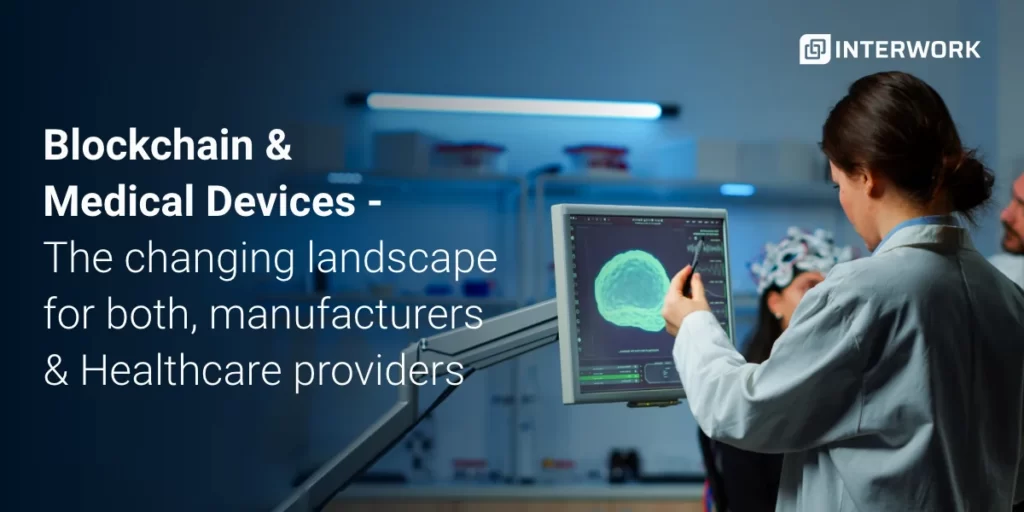Smart Manufacturing and ERP: Leveraging Industry 4.0 for Better Functionality
In the current world of dynamic industrial environment, Smart Manufacturing…

Blockchain technology, which is disrupting almost all economic sectors, has a massive potential to impact healthcare and the medical device industry. In fact, blockchain’s potential for medical devices is expected to be greater than its impact on the financial services sector.
As per a report on the future prospect of medical devices by 2030, KPMG outlines the potential of blockchain applications in different key areas of the medical device industry such as clinical, regulatory, manufacturing, distribution, and marketing.
While the healthcare sector is historically a slow adopter of new technologies, now is the time for medical device companies to begin giving blockchain technology a serious look.
There is always a risk that patient data stored in medical devices centrally can be hacked from the device or during transmission. Blockchain provides an alternative whereby the data is protected cryptographically, immutable and private. This is not possible with traditional data storage and transmission processes.
Blockchain can keep service records that may be required depending on the medical device and its purpose. Blockchain technology could also be used to help in case a device malfunctions. It can determine if the device was manufactured incorrectly or was tampered with at a later date.
Furthermore, regulators can embrace blockchain to identify actual medical device efficiency and to provide faster approvals while keeping patient safety as a top priority. Regulators can automate audits of all devices and even conduct real-time background audits.
Implementing Blockchain for Healthcare & Life Sciences can help to keep permanent records of the development, design, production, and distribution of medical devices to all the parts from suppliers. Since the information once submitted to a blockchain cannot be changed, it results in permanent traceability for every device.
The data breach cost for healthcare companies has increased, costing $380 per record as per a study was done by IBM Security in 2017. So, healthcare providers need to look at implementing a secure and trusted IT ecosystem to manage healthcare data.
Hence healthcare companies can leverage Blockchain-Based Systems to make all the digital records of the patients safe. These systems operate on distributed network consensus with built-in cryptography techniques, so there is an extra layer of trust, reducing the number of cybersecurity threats for medical devices and embedded IT systems.
Blockchain technology can allow greater access to and Security of Information, which can benefit everyone involved in medical device work from the manufacturers to the end users. Several companies are already investing in the capabilities of Blockchain for Healthcare & Life Sciences.
Companies that are early adopters of this breakthrough technology could potentially enjoy significant advantages of being the first mover in 2030.